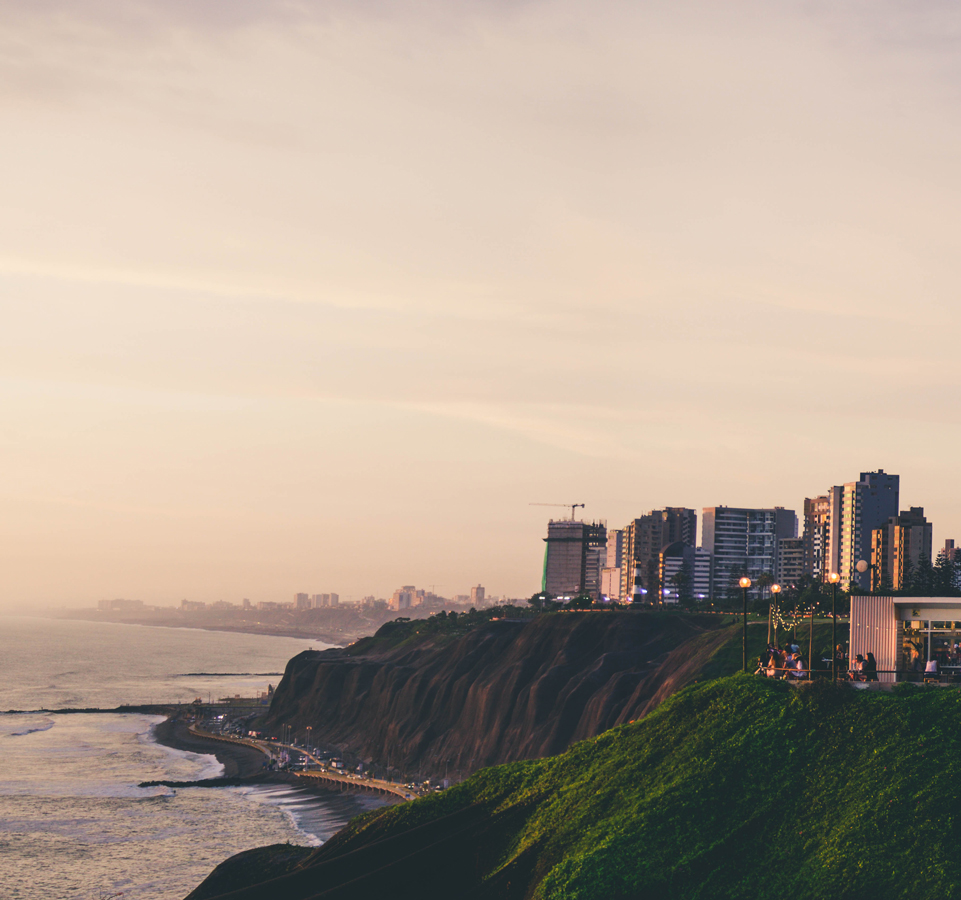
Healthcare in Peru – advice for the journey to Peru
Most private hospitals in Peru have good medical facilities with highly trained doctors and nurses.
Stomach flu is the most common disease for visitors in Peru and when you consult a doctor you get both quick and good help. At private hospitals the doctor often suggests further health examination and tests as part of hospital business. Health care (including dental care) is very cheap in Peru.
Protect yourself by:
Only drinking bottled water
Eating at good restaurants (not in the street)
Ensure that meat and fish are well fried or boiled
Vegetables and fruit should be well rinsed (not in water directly from the tap)
Wash your hands as often as you can, preferably use hand cleanser with alcohol
Use common sense
Hospital Care
There is probably no agreement between your country and Peru according to social convention. This means that if you need to see a doctor or a hospital in Peru or any other South American country you visit, you will bear all costs. If these are covered by your insurance, you take a discussion with your insurance company. If you are in need of cash to cover medical costs and have the relevant travel insurance, contact your SOS International Agency.
When you need medical care and are brought to the hospital, they usually require payment in advance and do not allow you to leave as a patient until you have paid the entire hospital bill. Given the paper handling and geographical distance, it is therefore a good idea to before traveling have a financial planning for this.
Hospital Nacional Arzobispo Loayza is a State hospital that is open for all patients 24 hours a day.
Address : AV. Alfonso Ugarte 848, Lima
Tel. : 431 3710, 431 3799
Home Page : www.hospitalloayza.gob.pe
There are several major private hospitals in Lima that offer general medical care, pediatric care and other specialized medical care, and dental care.
Clinica Ricardo Palma
AV. Javier Prado Este 1066
San Borja
Tel.: 224 2224
Website: www.crp.org.pe
Clinica Maison de Santé de Lima
Jr Miguel Aljovin 208-222
Lima
Tel.: 619 6000/ankn 7 in acute cases
Website: www.maisondesante.org.pe
Clínica Anglo Americana
AV. Alfredo Salazar cuadra 3
San Isidro
Phone: 712 3000
Website: www.angloamericana.com.pe
Clínica Adventista Good Hope
Malecón Balta 956
Miraflores
Tel.: 610 7300
Website: www.goodhope.org.pe
Home- and travel insurance
If you travel to Peru and other South American countries you should have some form of insurance in case you have to pay for medical care during the trip. Many have a home insurance policy for their residence where it usually is included a travel protection for a number of days, and therefore need not to pay for any additional travel insurance. But if you’re going to be away longer time, you should get a supplement insurance to protect yourself during the entire trip.
The protection of home insurance covers both patients’ fees and the costs incurred for the care you may need. On the other hand, the home insurance does not cover such costs that lie outside the health care system, such as compensation for delays. This type of compensation you can only get through a specific travel insurance, or get it free when you pay the trip with some debit- or credit card.
Transportation by air ambulance, for example, can cost tens of thousands of dollars, which must be paid if you are uninsured. The Foreign Ministry usually does not help with return travel in connection with sickness or accident.
Tips to help reaching relatives
If you are alone when you suddenly become ill or have an accident, it may be difficult for health workers in another country knowing who they should contact. You can have telephone numbers of relatives listed on a slip of paper with information of their numbers.
You can also add the names to your closest relatives in the mobile phone’s address book, with the contact name ICE, which stands for “In Case of Emergency”. If you have multiple contacts you can number them with numbers after the acronym ICE. Please note that the phone number should start with a country code and rule out the first zero in the area code.
Insurance in traffic
Traffic accounts for a large proportion of the fatal accidents that tourists are involved in, making it one of the biggest health risks on a trip is to rent a motor vehicle. Traffic in Peru is honestly said very busy, ruthless and dangerous. If you choose to rent a car, it may be easier from the insurance point of view to rent a car through a travel agency in your home country. In this way, you get help with any insurance that you need to supplement with. In most countries, for example, the insurance do not cover personal injuries of drivers so you may need a specially driver’s seat insurance. And the excess can often be very high if something happens to your car.
Think of what medications are needed
The medications you need to take with you abroad should be in its original packaging. In this way, you have something to show, both if you need to contact health services abroad and if Customs are wondering what you are bringing with you. If you take medicines that count as drugs, as some sleeping pills or strong pain-relieving medications, it is required in many countries a certificate in order for to bring them into the country. Pharmacies can issue such a certificate to some countries, while other countries require a medical certificate. The Embassy can provide information on the rules that apply in that particular country.
There are also special rules to bring medications in carry-on baggage on the flight, for example, the amount of fluid is limited. Pharmacies can mark packaging of liquid medication that you need during the journey if you tell them already when you pick up the medicine.
SOS centers can provide emergency assistance in place
Through your insurance company you may get a “card” with important phone numbers if you need to seek treatment abroad. The most common is that there are numbers to SOS centers that insurance company cooperates with. One example is the SOS International in Denmark, but there are also other centers. On SOS centers you can get help 24 hours a day, for example, where in the country health care is available and which rules that are applied.
Help from Embassies and Consulates
If you become ill or injured in Peru you can always contact your country´s Embassy in Peru. Before you go on your journey write down the contact information for your Embassy.
If you are exposed to a crime, you should turn to the local police in the first place. The Embassy or Consulate can, however, help to find a lawyer in the case you need one.
In an emergency
If you need to call an ambulance, police or fire brigade in Peru, the emergency numbers are:
Police (Policia): 105
Ambulance (Bomberos): 116
A little travel pharmacy is great to prepare
A couple of non-prescription drugs can be of good help on the journey. Although products also are available abroad, it can be difficult to find the right one when the active substances are written in foreign languages.
Vaccinations for Peru
Recommended Immunizations for Peru Tours
No vaccines are currently required for entry into Peru, but the necessary immunizations will help keep you safe and healthy on the road. The following guidelines are not a substitute for a consultation with a medical professional. Always seek advice from your doctor or a specialist travel clinic before you travel, ideally 4 to 6 weeks before you go to Peru. Some vaccinations require several injections, while others need time to take effect.
Hepatitis A
All travelers to Peru should be vaccinated for hepatitis A, an infection that can be spread through contaminated food and water. In most cases, one dose of hepatitis A vaccine taken any time before travel is enough to offer protection, although two weeks before travel is ideal. Common side effects include pain at the injection site and headaches.
Hepatitis B
Your travel plans will determine whether you need the hepatitis B vaccination — you should discuss the issue with your doctor before receiving the injection. According to the Centers for Disease Control and Prevention’s “Health Information for travellers to Peru”, the vaccine is especially recommended for travelers who “might be exposed to blood or body fluids, have sexual contact with the local population, or be exposed through medical treatment.” The vaccine is normally administered in three doses over six months, but quicker alternatives do exist (but they may not provide optimal protection). A combined hepatitis A and hepatitis B vaccine is also available.
Yellow Fever
Yellow fever, like malaria and dengue fever (for which there is no vaccine), is a disease transmitted by infected mosquitoes. Not all travelers to Peru will need the yellow fever vaccination, but it is recommended for certain areas of the country. Broadly speaking, risk areas are located to the east of the Andes, in jungle locations below 7,545 feet (2,300 m) in elevation. The vaccine is given 10 days before travel and is effective for at least 10 years. Possible side effects include flu-like symptoms.
Rabies
Most travelers don’t need the rabies vaccination for Peru. However, your doctor may recommend the vaccine due to special circumstances, including:
you are going to Peru to work with or handle animals (veterinary work, wildlife research or to work in an animal sanctuary, for example)
you will be involved in activities that might bring you into close contact with bats (including spelunking/caving)
you will be staying in a rural area with limited medical care where the risk of rabies may be high
With or without the vaccine, you should always take care to avoid animal bites in Peru. Stay clear of stray animals, be cautious around wildlife and avoid contact with bats.
Typhoid
The CDC recommends the typhoid vaccine for all travelers to Peru, particularly those “staying with friends or relatives or visiting smaller cities, villages, or rural areas where exposure might occur through food or water.” In general, getting the typhoid vaccine is a good idea. There are two types of vaccines available: an oral vaccine that consists of four capsules (one taken every other day) or an injection administered a week before travel. Neither typhoid vaccine is 100% effective, typically protecting 50% to 80% of recipients. Standard precautions such as careful hygiene, hand washing and attention to food preparation help protect against typhoid.
Routine Vaccinations
Before you travel, make sure you are up-to-date with your routine vaccinations. Your doctor will be able to check your vaccination history and let you know which injections and booster shots you need. Immunizations include:
measles, mumps, rubella (MMR) vaccine
diptheria, pertuanis, tetanus (DPT) vaccine
polio vaccine


